Top 10 Weirdest Flowers in the World
 |
Plants are fascinating and lovely creatures. They develop and blossom in a variety of forms, hues, sizes, and scents.
There is no denying that nature is fascinating and amazing, but some species, like the ones listed below, have a mystique that is quite astounding. Their peculiar, independent behavior is more akin to that of a human than a plant.
After reading about each of these strange and beautiful beauty, we guarantee you'll exclaim, "Wow, that's so cool!".
1. Amethyst Sea Holly
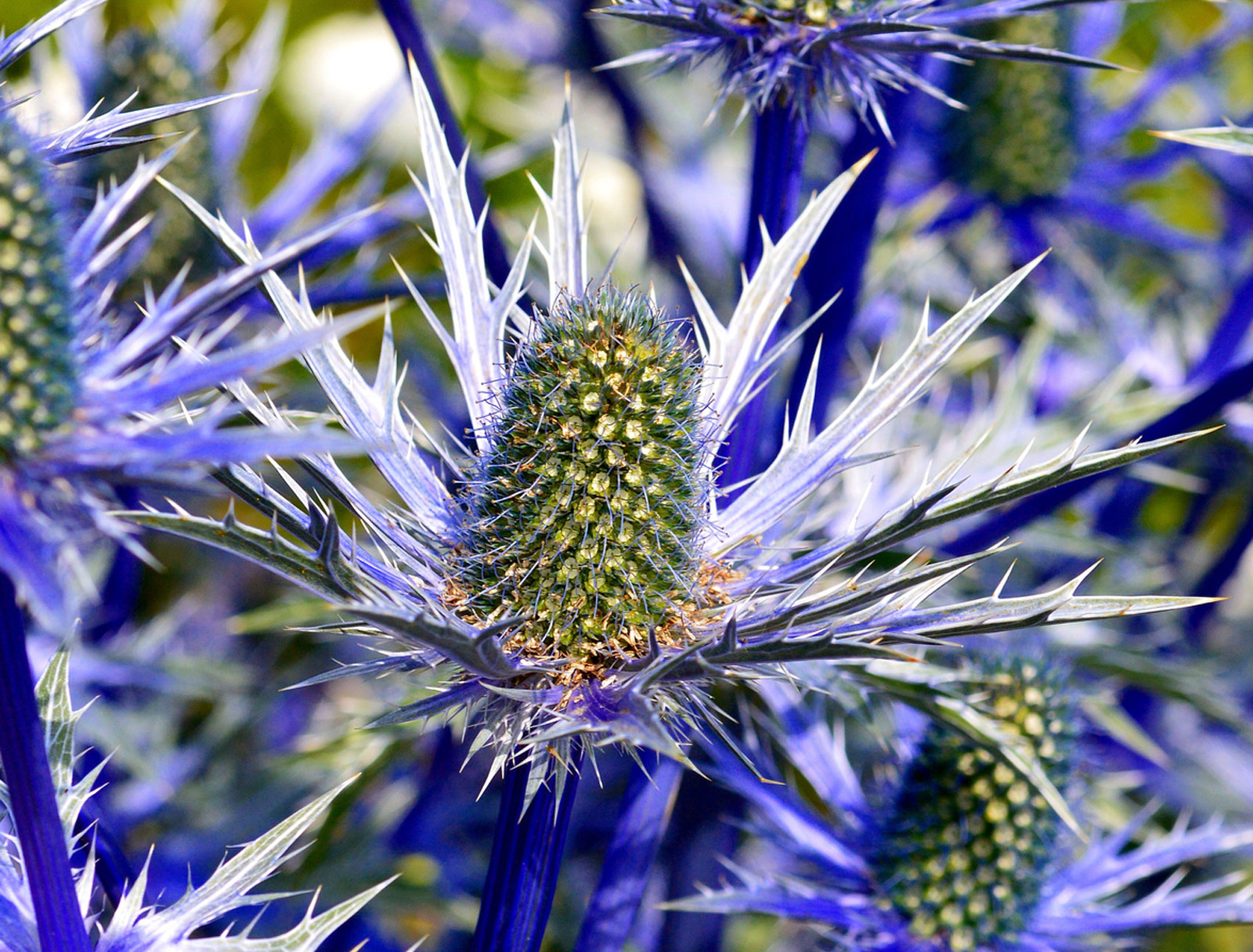 |
| Amethyst Sea Holly - Photo: Gardening Know How |
From the Caucasus Mountains in the east to Patagonia in the south, eryngos are widespread throughout much of Eurasia and the New World. The foliage of eryngos can be wildly incised and almost prickly, and the majority of their flowers are steely grays and blues. If they are cut just before they are in full bloom, they behave almost like everlastings.
I've grown dozens of different species and cultivars over the years, and I enjoy all of them. But the amethyst-flowered sea holly, which blooms in the late summer, is, in my opinion, the best member of the genus. The lavishly slashed and twisted foliage is delightful in and of itself. A well-established clump, however, will sport dozens of sizable flowers that combine violet purple, hot pink, and cobalt blue in a most alluring combination beginning in August and continuing for much of the autumn. And it appears differently depending on the lighting. This attractive plant is simple to grow in a border or rock garden, and since it blooms during a relatively slow season for the garden, it stands out—albeit in an odd way!
2. Syrian Bear’s Breeches
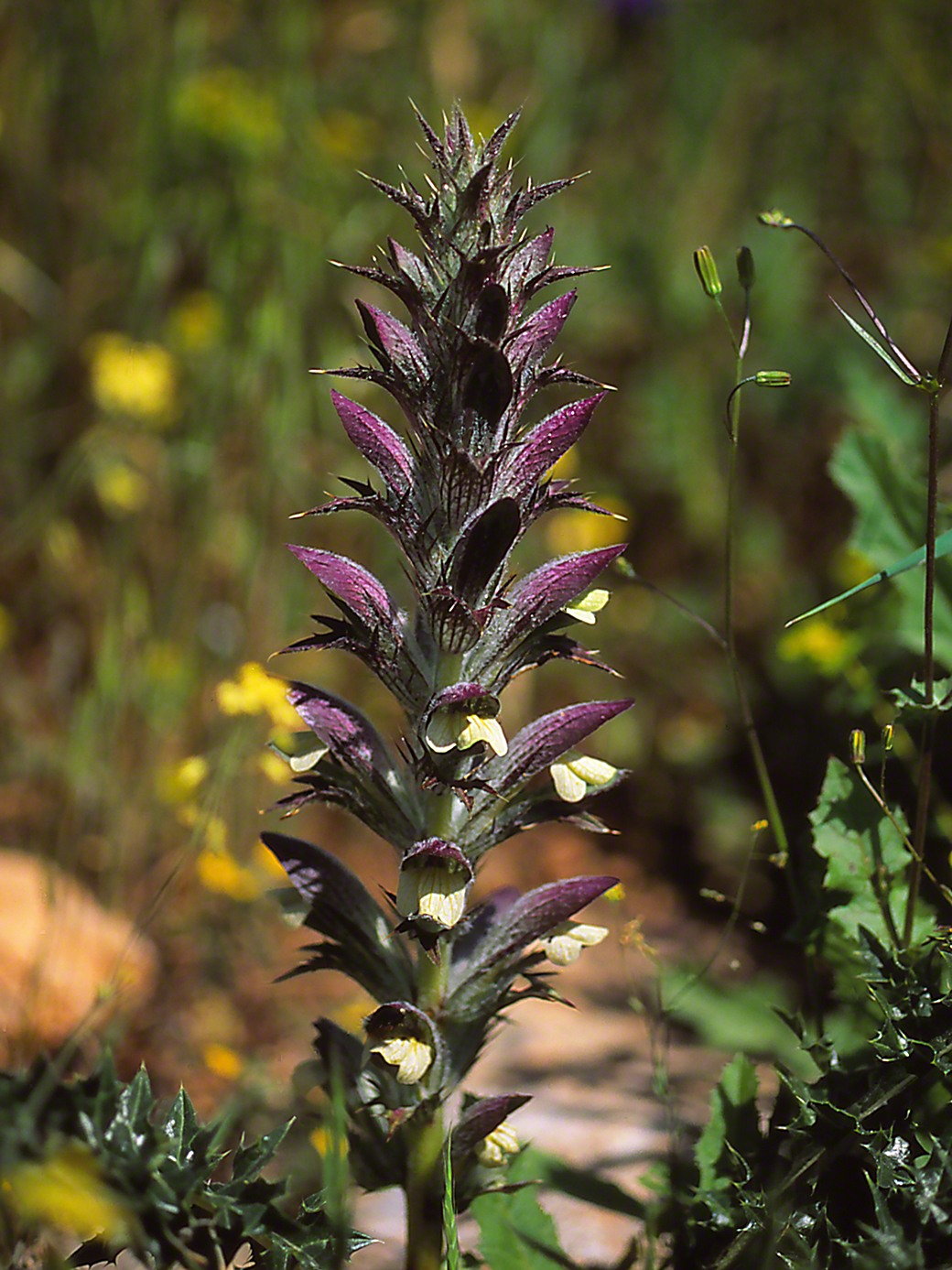 |
| Syrian Bear’s Breeches - Photo: Winged Beauty Buttleflies |
Instead of the starlet charm of an ingénue, the genus Acanthus has the stylized beauty of Bette Davis. These plants are the old ladies of the Gardens, full of legend. The only common name for them in English is "Bear's Breeches," which is an amusing concept when you consider it. The lobed leaves of Acanthus were so beloved by the ancient Greeks that they modeled elaborate Corinthian columns and molding after them. Although few of us are aware of it, acanthus patterning still exists in contemporary design.
Various species can occasionally be found in the top local garden centers. The exotic and enormous Acanthus spinosus has proven to be tough. Acanthus balcanicus is a particularly tough and unusual plant (also known as A. longifolius and A. hungaricus). However, I believe that A. syriaca, which we have had at the Gardens for almost 20 years, is the most unusual and stunning species in the genus. It grows well in both full sun and dappled shade, forming dense clumps of prickly foliage. The blooms appear in late May and remain gorgeous for the majority of the summer, with bracts that are deeply stained violet-purple and creamy, face-shaped flowers that protrude alluringly.
It's funny how some plants resemble quasi-quadrupedal creatures that appear to be able to move around. It's worth looking for because this plant is occasionally offered by a few mail-order nurseries.
3. Night-Blooming Cerus
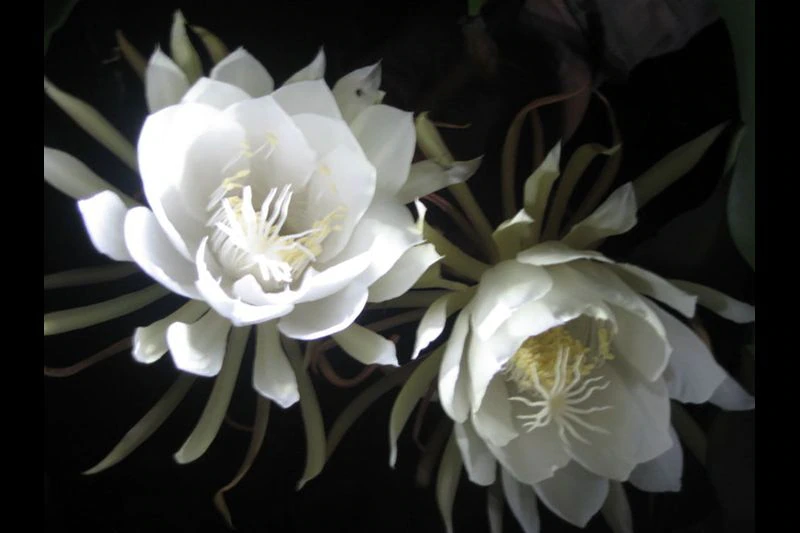 |
| Night-Blooming Cerus |
More so than their flowers, cacti are recognized for their spiky spines. Unless you're referring to the cereus that blooms at night (cereus is a genus of cacti that bloom at night). It is well known for its fleeting, silvery-white night flowers.
They lessen competition for pollinators from other plants by blooming at night. One type of night-blooming cereus, the stately "Queen of the Night," not only blooms at night, but also only once a year!
4. Rhododendrons
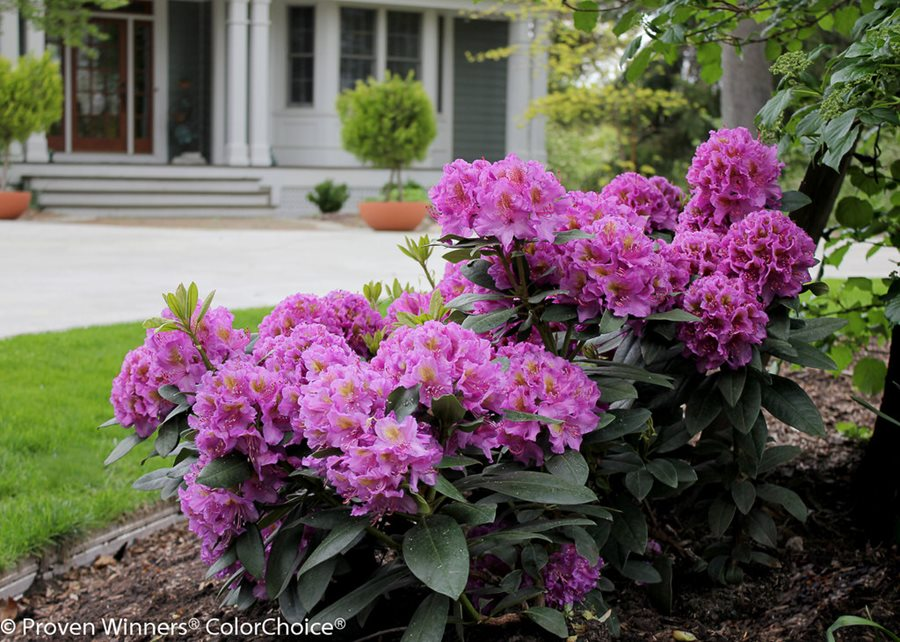 |
| Photo: Garden Design |
Evergreen rhododendrons are cold-tolerant bushes. Yet just because most species can survive a strong freeze doesn't mean that conditions can never be too chilly for them. Their lengthy, leathery leaves coil up like cigars on blustery winter and spring mornings. Rhododendrons employ this defense strategy to prevent themselves from becoming dehydrated in cold climates.
When the ground is frozen, the shrub loses water through its leaves because the roots can't absorb enough groundwater from the soil to make up for what would otherwise be lost through the leaves. As a result, the shrub's leaves spiral inward to prevent water from evaporating. Its leaves spread out as the ground heats up once more.
5. Lizard Ice Plant
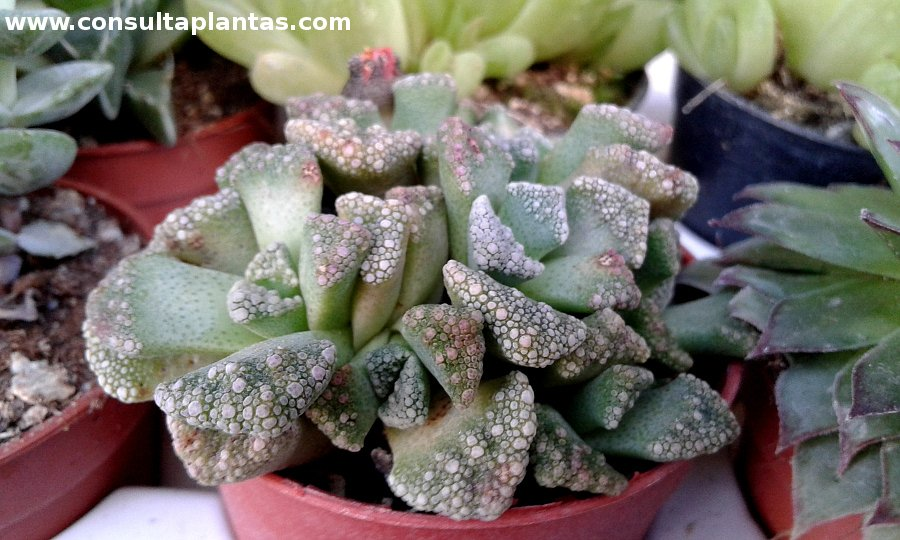 |
| Photo: Consulta Plantas |
Over the past few decades, hardy ice plants have risen to the top of the list of ground covers in our area. Most of them spread and grow fairly quickly, which can be problematic in particular areas. Yet, there is a whole group of ice plants that grow in clumps or slowly and are particularly well suited to rock gardens and xeriscapes. None are more fascinating than the Aloinopsis genus, which is almost entirely restricted to the highest ridge tops of South Africa's interior, where the winters are extremely frigid.
The most peculiar and seductive of these has to be Aloinopsis malherbei, which genuinely resembles a lizard more than a plant. Amazing, succulent leaves have odd, warty tubercles that are harsh to the touch all over them. The plant resembles Beauty and the Beast when its amazing blossoms bloom in the spring! This ice plant requires a sunny area with good drainage.
This vegetable lizard is an excellent alternative to horned toads because they are a little too exotic for our gardens. The best part is that it doesn't bite or squirt blood from its eyes!
6. Black Hollyhock
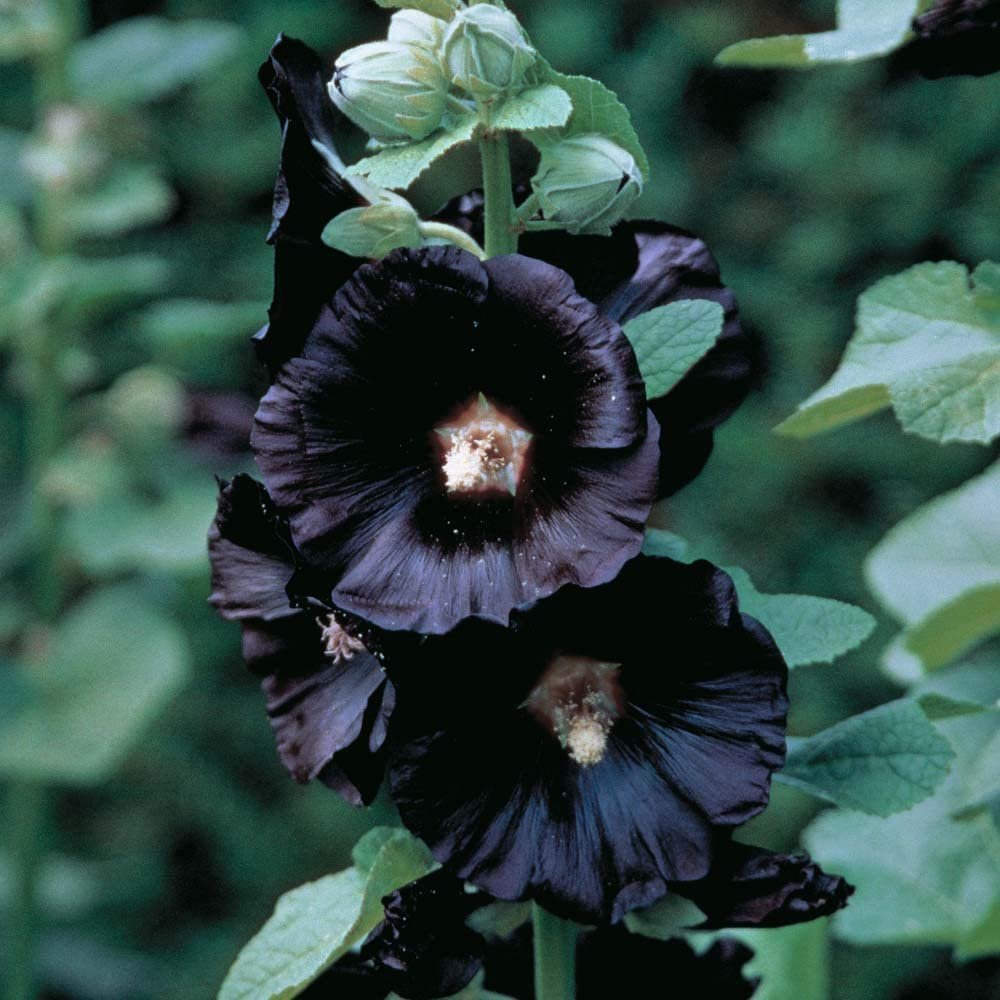 |
| Black Hollyhock |
You'd be surprised at how many hundreds of beautiful pictures have been shot of this hollyhock, therefore it's worth conducting a Google image search for it. Like with many hollyhocks, this one grows well in practically any soil, including clay, sand, and rich loam, as long as it is not overwatered. When I was a child, I recall seeing hollyhocks growing in all the Boulder alleyways; they were typically pink, white, or purple. This uncommon black variety merits a prominent location in the yard and looks especially stunning when mixed with annual sunflowers that are light straw in color.
Like all hollyhocks, this one also produces a thick basal rosette of seersucker leaves that last all winter long. The tall stem emerges in the spring and, when healthy, can grow to a height of 6 feet. Throughout the summer, the flowers are displayed in flushes. Although I have not found this hollyhock to be as prone to mildew as certain varieties of mallows, I would still advise against overwatering in the late afternoon or evening. In order for the leaves to dry out rapidly, water it in the morning. Just cut off and remove the afflicted sections of your plants if they do develop unattractive mildew; fresh new leaves will rapidly replace them.
In the interim, you can spend the entire summer gazing in awe at the silky blossoms' ebony shine. Bees buzzing in hollyhock hoops instantly transports me back to my younger years. Do kids still use these to create little doll dresses?
7. Prayer Plant
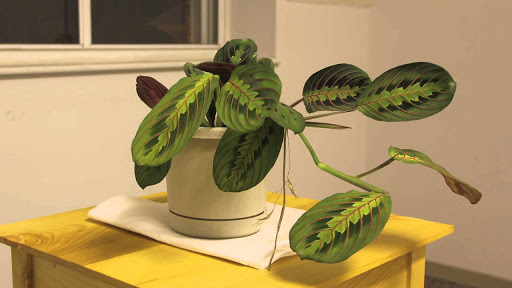 |
| Photo: Youtube |
The broad, oval-shaped, variegated leaves of the prayer plant (Maranta leuconeura) fold up into an upright position at night, resembling a pair of hands joined together in evening prayer.
This action, known as nyctinasty, takes place in reaction to variations in the light. A prayer plant's leaves may fold up at night to prevent rain from gathering on the leaves and instead direct it to the roots, according to some theories. Many people grow prayer plants in graves since they represent prayers for the dead because of this remarkable plant activity.
8. Pitcher Plant
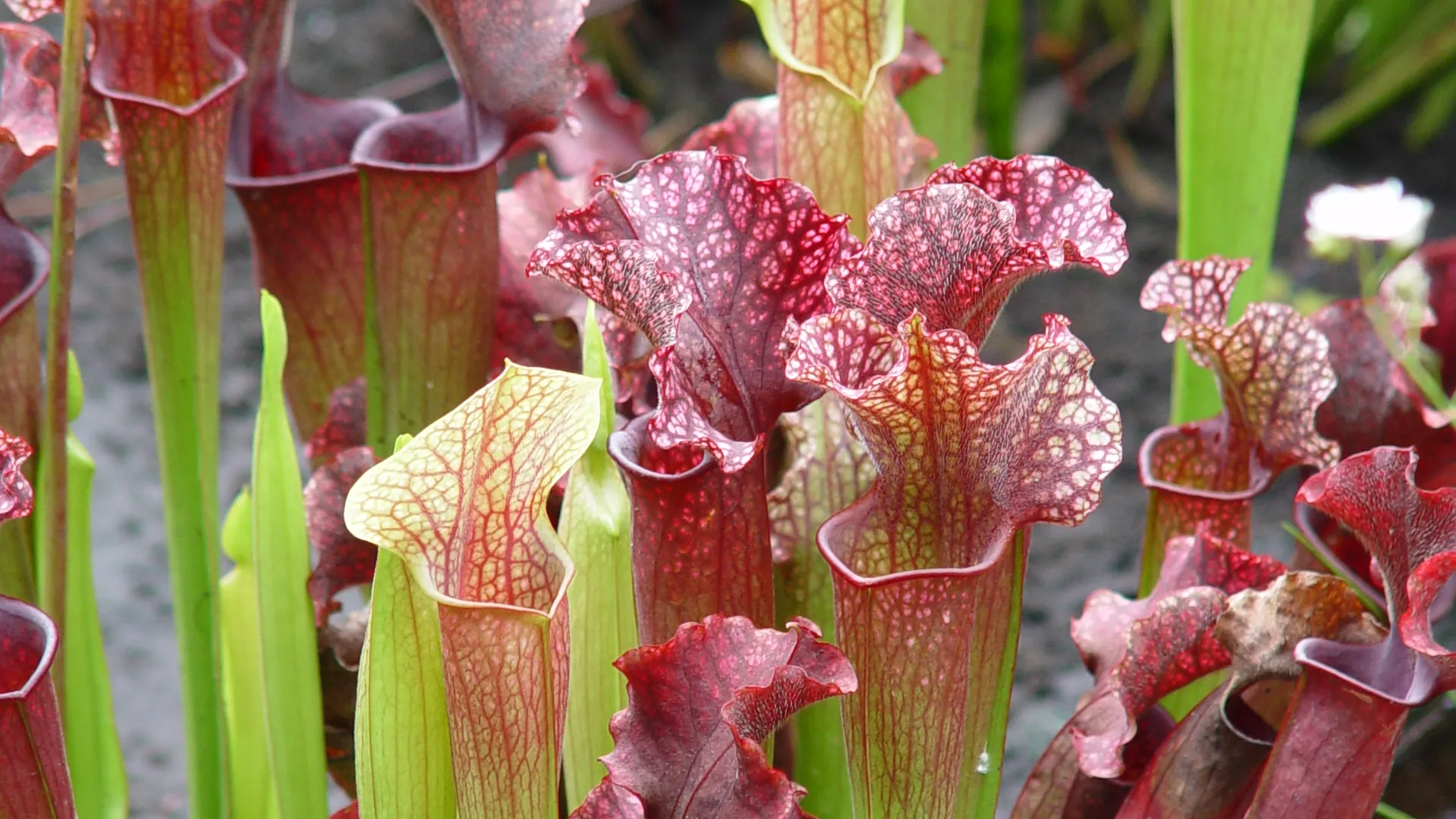 |
| Photo: The Desert Sun |
Pitcher plants completely redefine what "farm-to-table" means. These are one of Mother Nature's carnivorous plants, which consume any insect that makes the mistake of wandering by, including ants, flies, crickets, and others. Bugs are drawn deep into the belly of a pitcher plant by a nectar that it secretes after sitting on the edge of the cupped leaf of the plant. The bug can't climb out of the plant because the inside walls are too steep and slippery, and it eventually perishes.
Of course, they do this for a reason: These plants must rely on other methods, such as eating insects, to obtain nutrition because they frequently grow in unfavorable soil conditions, which prevents them from absorbing enough nutrients and minerals through their roots.
9. Birds of Paradise Bush
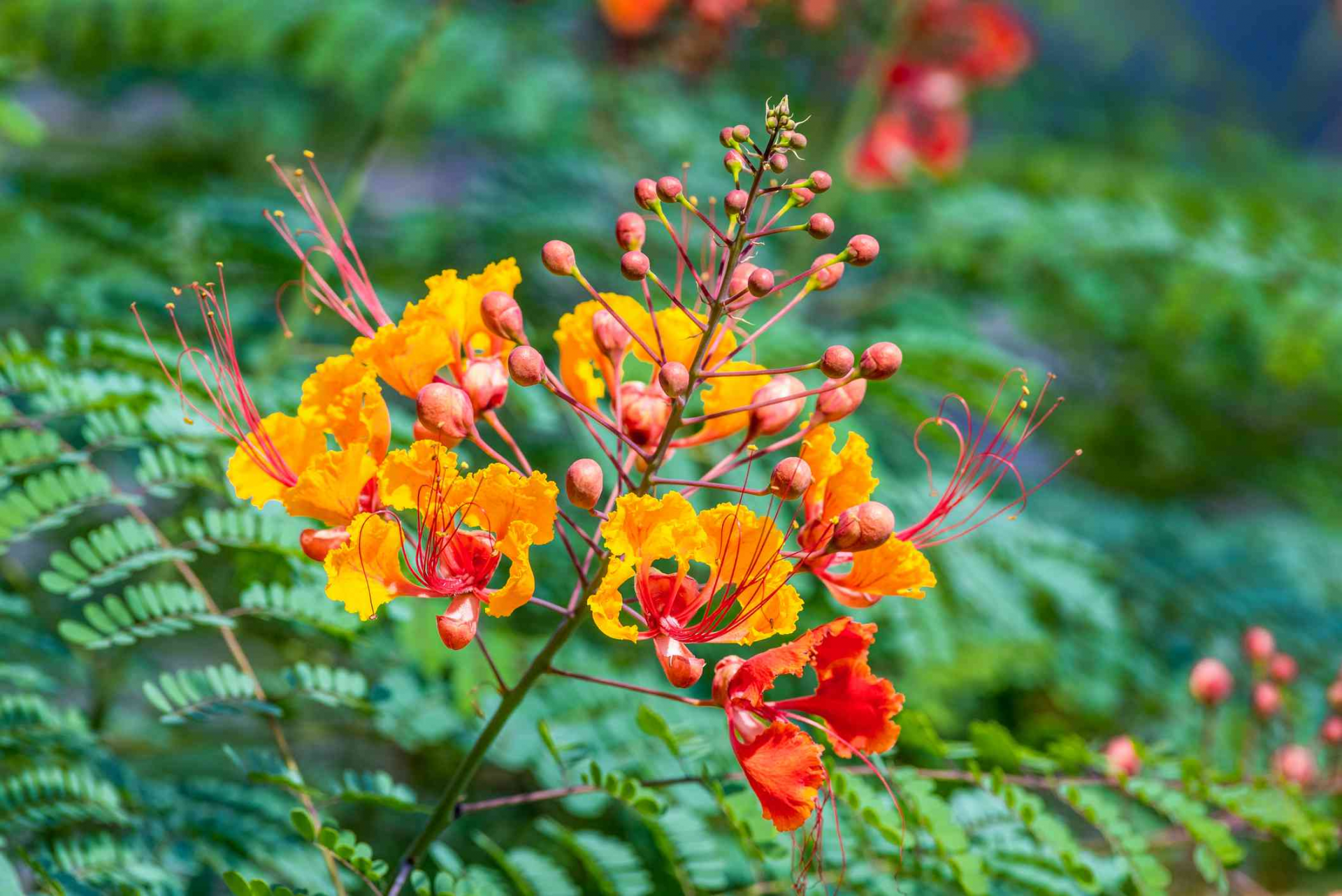 |
| Photo: The Spruce |
This name can be confusing because there is another plant known as a bird of paradise (Strelitzia), which is related to the banana family and is frequently grown in Mediterranean regions. This stout bird belongs to a colorful subspecies of the pea family. Wide-open, face-like blossoms on it make it difficult to believe they're just glorified beans. The only shrubby South American plant that has so far proven hardy in the Denver region is a bird that can grow into a small tree in Argentina's Andean foothills. Yet, even in the harshest winters, the stems are not resilient. They frequently freeze to the ground, emerge late in the spring, and nevertheless gain 8 or 10 feet in height in a season.
In June, the plant begins to produce enormous panicles of amazing, spidery blooms. Up until the first frost, the show is still going strong. After that, the flowers are supplemented with large, bean-like pods that serve as separate winter decorations. So that it can survive, provide this bush with a protected microclimate in the garden, such as next to a home on the sunny side or up against a boulder. The Denver Botanic Gardens' open-air plantings get the full heat blast of the "urban island" effect.
10. Haller’s Pasqueflower
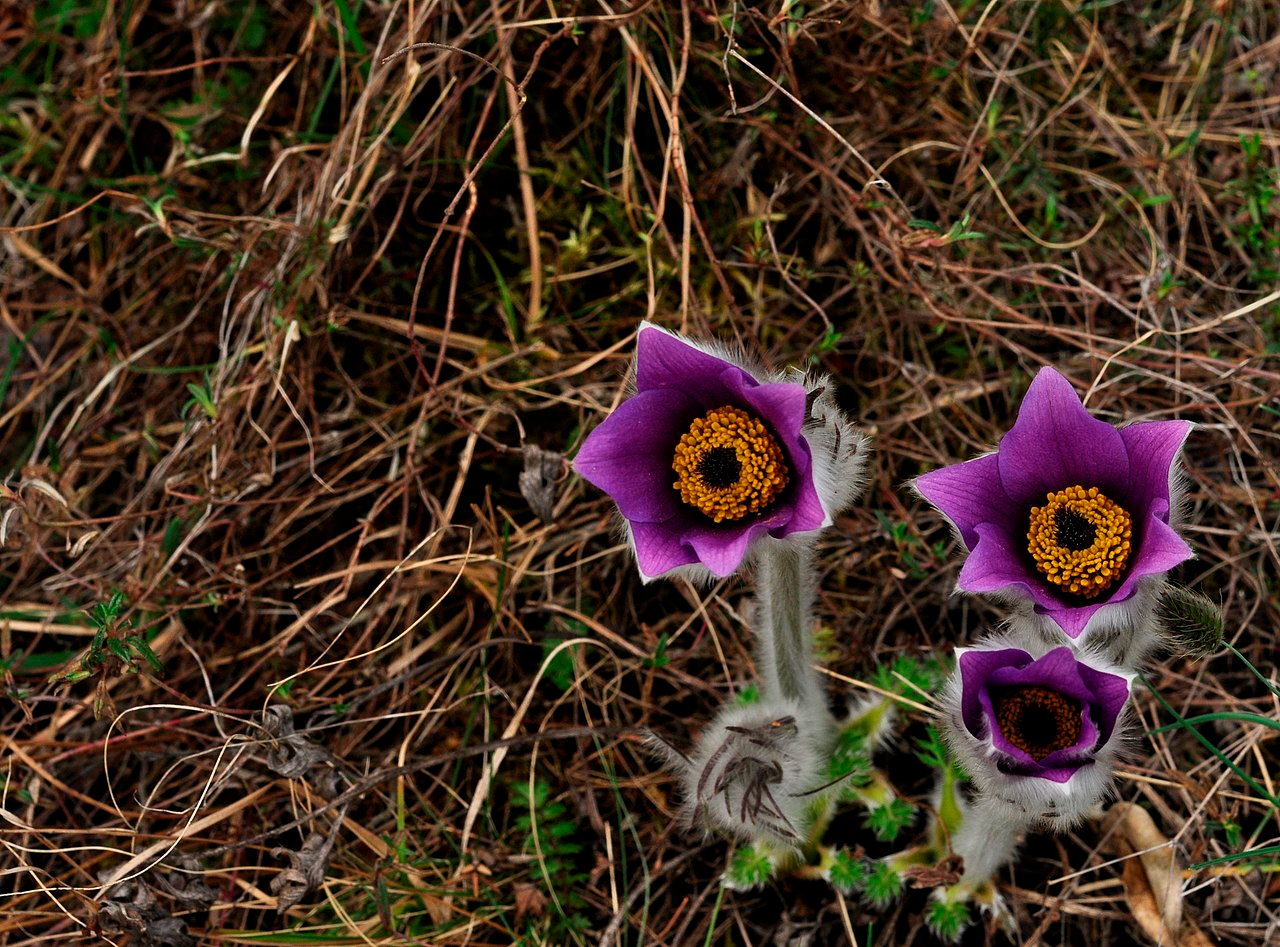 |
| Photo: Wikimedia Commons |
Compared to virtually any other wildflower, I believe I have taken more photos of our native pasqueflower (Pulsatilla patens). Why? because it blooms at a time of year when we are all rather desperate for color—early in the spring. It is also obviously quite photogenic. Every spring, one must always strive to improve their efforts! However, our native species is difficult to grow; at most, I've had success with it for a year or two, and the flowers in the garden are weaker than those found in the wild. Although highly flamboyant and spectacular, the typical European pasqueflower lacks the endearing appeal of our local hairy beast.
Yet, Pulsatilla halleri, an easily grown pasqueflower from Eurasia, resembles our native species in appearance because to its opalescent lavender flower hue. Nearly as pleasing as the flowers in late April are the extravagantly hairy seed heads. Despite the fact that the plant is not generally accessible, a nearby wholesale nursery is stockpiling more of it. Also, this is a staple in a wide variety of commercial seed sources, including the renowned seed list of the North American Rock Garden Society. Every year, I'm astounded by the silky, fuzzy flower buds that seem to be some kind of fascinating prehistoric monster coming from the ground. It's a show that's well worth the effort to put on in your own garden.
 Top 10 Countries Having Most Beautiful Women in the World Top 10 Countries Having Most Beautiful Women in the World Women are beautiful by default, however, there are some countries having so many beautiful women in the world. Check out the top 10 below! |
 Top 10 Oldest Prisoners in the World Top 10 Oldest Prisoners in the World Who is the oldest prisoner in the world? Check out the answer in our list of the 10 oldest inmates on Earth below! |
 Who is the Oldest Person in the US - Top 10 Oldest American Who is the Oldest Person in the US - Top 10 Oldest American Hester Ford, the oldest living person in the United States, died Saturday at her home. Read on to know more about her and the list ... |
 Top 10 Most Beautiful Women in 2021/2022 Top 10 Most Beautiful Women in 2021/2022 There are a huge number of beautiful women all over the world and everyone has their personal opinions and preference to admire the beauty you ... |


























